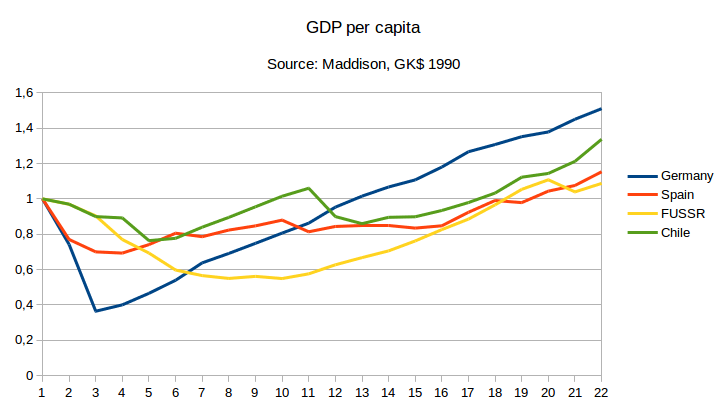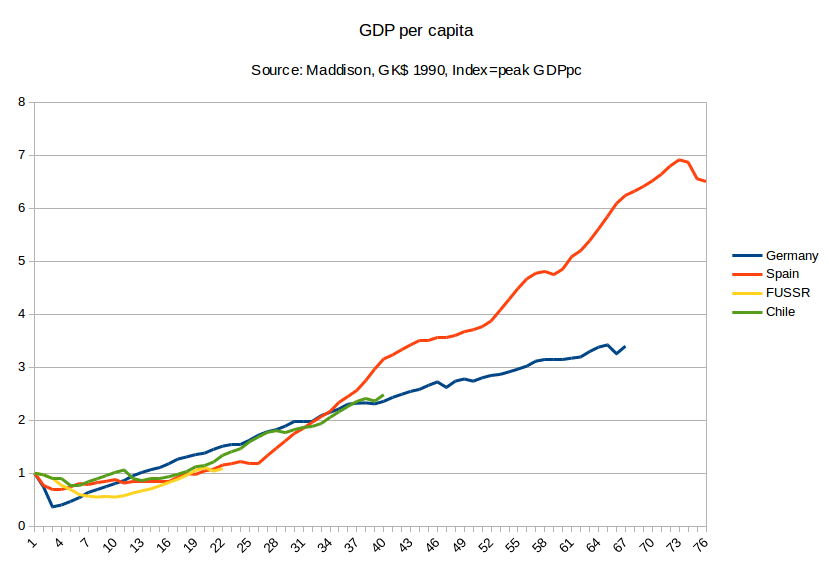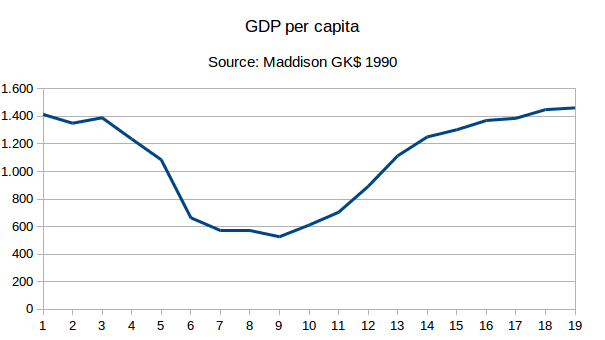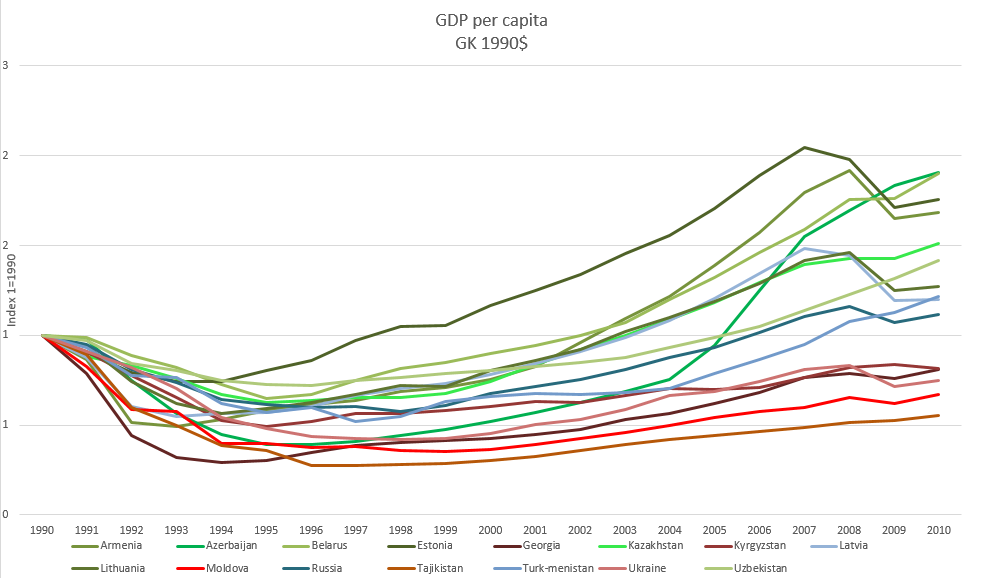The Soviet Union: Brief remarks on the transition
[Part of the Soviet Union series]
I wanted to do a longer post on the fall of the USSR, and that will appear here at some point, but I wanted to do a quick post now with some minor points.
First, a chart of the fall, measured from peak GDP,

That's 13 years to recover. Some communists take this to mean.. ahá! This proves that communism works, as GDPpc falled badly when the transition to capitalism happened. Here's the chart for the years prior to the fall:

So communism was zooming along, then a transition to capitalism happened, and it took quite a few years to recover.
There's a catch, however. Those two charts are for Nazi Germany at the end of World War II. :-). You just accepted the superiority of Nazism. Oops.
Here there is a comparison between Chile (just after Pinochet), Spain (just after the Civil War), Germany (just after the end of WWII) and the Soviet Union (just after the fall)

The point of this is to put the Soviet fall in perspective. If you then look at the longer term:

Here there's another chart. Guess what it is:

This shows pre-Revolutionary Soviet Union (basically, Russian) GDP per capita.Should we infer that the feudalism is better than communism?
What happened in the Soviet republics:

Finally, the case of Poland,

First blue bar is the foundation ofSolidarity. Second blue bar marks the start of the reforms towards capitalism.
What looks like a disaster in the short run may be just a blip in a long run trajectory of growth. The late USSR should be regarded as a stagnating bubble economy, but instead of misallocated resources in a few sectors, it had misallocated resources in most of them. The transition away from central planning should be seen as an event of the same caliber as a post-war depression, especially if it is done the way it was done in Russia (some countries that used to have central planning recovered faster).
Comments from WordPress
Alex 2016-05-01T02:54:07Z
There was this thing called the Marshall Plan... post-war Germany received massive amounts of economic aid from outside. Neither post-communism Russia, nor post-Tsar USSR, received anything, your comparisons are silly. (In fact, the only thing that Russia got from the outside when the USSR was formed was invasion - the Allied Intervention in the Russian Civil War).
Artir 2016-05-01T09:17:49Z
Lend-Lease, anyone?
The point here is to put the Soviet fall in perspective. Are falls in the order of 50% of GDP unheard of? No, they have happened in the past, and I show a few of them. One may object to my final comparison, that it's not fair to compare the fall of the USSR to the effects of a war-induced depression, and that's fine. This is not my full analysis of this particular incident.
- The Soviet Union series | Nintil 2016-05-14T15:57:02Z
[…] The Soviet Union: Brief remarks on the transition […]
Citation
In academic work, please cite this essay as:
Ricón, José Luis, “The Soviet Union: Brief remarks on the transition”, Nintil (2016-04-30), available at https://nintil.com/the-soviet-union-brief-remarks-on-the-transition/.